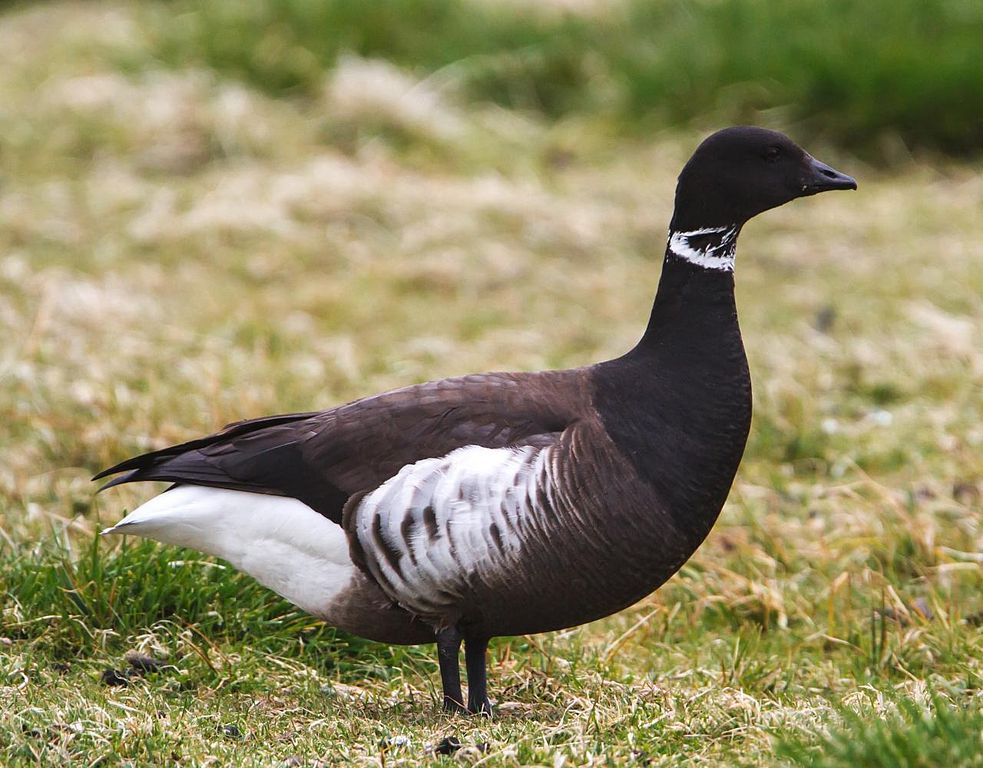
Dark-bellied Brent Goose (Russian) (Branta bernicla)
Species name
- Dutch name:
- Rotgans
- English name:
- Dark-bellied Brent Goose
- German name:
- Ringelgans
- French name:
- Bernache cravant
- Scientific name:
- Branta bernicla
Scientific classification
- Order:
- Anseriformes
- Family:
- Anatidae
- Onderfamilie:
- Anserinae
- Genus:
- Branta
Description
- Description:
Male:
Small, black to grey goose, has a short neck, and a small head and bill borne on a plump body. From a distance it looks all dark apart from the gleaming white under-tail, but is in fact typically grey-brown on the back with a small white necklace that can be all the way around the neck or just a touch of white on both sides. This varies depending sup species. The color of the belly varies from black to grey and brown barring with white according to subspecies and subpopulation. Bill, Legs and feet are blackFemale:
Are similar in appearance, although the male is usually slightly larger and tends to have a broader neck patch.Juvenile:
Looks similar to adult but not as defined color in plumage. Most lack white patch.
- Behaviour:
Northern Geese are generally hardy and easy to manage. They are usually gregarious and many species may be kept in flocks, however they tend to be territorial and aggressive in the breeding season and some may need to be maintained in separate pens. It is often possible to keep small ducks with pairs of geese, unless the individual goose pair is particularly pugnacious. They should always be provided with adequate water for swimming.
Standard Measurements
- Body Length (cm):
- The male (drake) of the Dark-bellied Brent Goose (Russian) measures approximately 55-66 centimeters. The female measures approximately 55-66 centimeters.
- Body Weight (grams):
- The male will weight about 1400-2250 gram. The female will weight about 1200-1769 gram.
The weight is notoriously variable and can only be used as indication!
- Subspecies:
Intraspecific variation:
- Light-bellied Brent - (Branta bernicla hrota)
- Atlantic Brent - (Branta bernicla hrota)
- Dark-bellied Brent - (Branta bernicla bernicla)
- Russian Brent - (Branta bernicla bernicla)
- Black Brent - (Branta bernicla nigricans)
- Pacific Brent - (Branta bernicla nigricans)
- Lawrence's Brent - (Branta bernicla orientalis)
- Habitat:
For a single pair of geese a total pen area of 300m² (or 200m² for smaller species, e.g. Red-breasted goose - (Branta ruficollis)), with at least 20% of this area water is suggested, although more water should be provided if possible in a larger pen.
- Note:
Brent geese are generally hardy and not difficult to keep; they are attractive as small flocks but require space and good grazing. Large enclosures with plentiful short grazing, a clear, cold lake and shade available are suggested. Feed with Lundi pellets in addition to grass.
These geese are generally not easy to breed; some subspecies breed in captivity better than others. They nest in grass in secluded areas, also in boxes and large baskets. Eggs laid mainly in May to July. Goslings should be protected from excessive heat, fed on starter crumbs and duckweed, and should be put out on short grass when a few days old.
Hybridisation is very rare, but has been reported with Branta spp. such as Canada goose - (Branta canadensis), Barnacle goose - (Branta leucopsis) - and also Anser species.
- Breeding:
- The female Dark-bellied Brent Goose (Russian) usually lays from 3-5 cream, yellowish, greenish or pale olive eggs and incubates them for 24-26 days.
- Artificial incubating:
The ideal relative humidity for incubating most waterfowl eggs is 55% (ground nesters) and 40% (cavity nesters). The temperature is usually 37.4°C. Set ventilation as recommended by the incubator manufacturer. Eggs must be turned, either automatically or by hand, a minimum of 4 times a day. As the duckling develops there is a loss of water from the egg and the air sac gets bigger. In normal development of an egg with a 24-26 days incubation, the air sac occupies about a third of it three days earlier. Cleanliness is vital and ideally eggs should be moved to a separate hatcher at this point, where the humidity should be increased to 65% and even higher once they have pipped internally.
- Bird banding:
- Recommended closed leg band ring size for the Dark-bellied Brent Goose (Russian) is 12 mm.The leg band ring can only be applied on a young goose at around 12-14 days old.
- It doesn't matter what leg that you band, but it's good to have a consistent system. Suggested: Left leg = Female, Right leg = Male
- Rearingfeed:
-
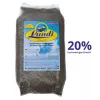
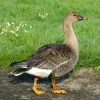

Floatable special rearing feed for all types of aquatic ornamental fowl - especially for the cultivation of trees as well as greening ducks.
This well-balanced complete feed with 20% protein content convinces above all by its good compatibility and forms the basis for visibly healthy growth from day one.
Made exclusively from wholesome and selected raw materials, Lundi Micro Regular is also ideally suited for the year-round feeding of waterfowl.
- Maintenance food:
-



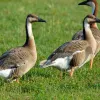

Lundi Regular with a protein content of 20%, valuable Spirulina and high-quality by-products is optimally balanced in its composition maintenance food for water ornamental fowl of all kinds. Especially green teal and Whistling ducks that are not dependent on a very high protein content, are well supplied.
Lundi Regular contains all the minerals and vitamins in full form that are important for the animals. Therefore also suitable as breeding food.


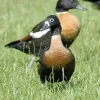


Floating full food for all sea ducks, green ducks, eider ducks and geese, especially in the moulting and breeding phase ideally suited. Packed with wholesome raw materials, natural vitamins and trace elements, this performance food with a protein content of 30% forms the basis for lifelong vitality.
- Regulation:
- Europese soort
- Regulation:
Het is niet verboden om deze vogels te houden die van nature in Nederland voorkomen, op voorwaarde dat deze vogels in gevangenschap zijn geboren; nakweek dus. Deze vogels zijn voorzien van een gesloten pootring. Het is wel verboden om deze vogels te houden die in het wild gevangen zijn. Alleen bepaalde instanties, zoals vogelasiels en vogelhospitalen, zijn bevoegd om jonge en gewonde wilde vogels te houden. Deze bescherming van vogels wordt vormgegeven door schadelijke handelingen te verbieden zoals:het doden, verwonden, vangen, bemachtigen en met het oog daarop opsporen van vogels (art. 9 Flora- en faunawet); het opzettelijk verontrusten van vogels (art. 10 Flora- en faunawet);het beschadigen, vernielen, uithalen, wegnemen en verstoren van nesten, holen of andere voortplantings- of vaste rust- of verblijfplaatsen van vogels (art. 11 Flora- en faunawet);en het zoeken, rapen, uit het nest nemen, beschadigen of vernielen van eieren van vogels (art. 12 Flora- en faunawet).


